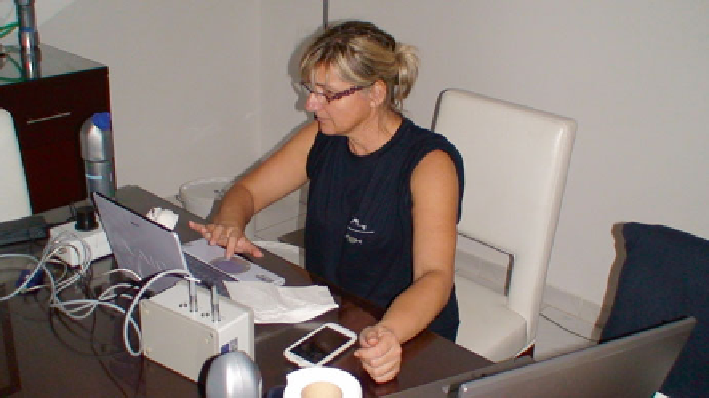Environmental Engineering Reference
In-Depth Information
Indicative Sample Analysis Methods
The easiest way for an indicative analysis of a sample is to show presence and
absence of viable organisms in a sample. This may be done by DNA, RNA, ATP or
Chl
a
detection. However, the presence/absence indication cannot assume organism
numbers and some of the approaches cannot distinguish between viable and dead
organisms as required by the D-2 standard. Efforts are underway to “translate” the
reading of these detection technologies into numbers, but the validation of such an
approach is not completed. We note that some of these detection technologies are
semi-quantitative, so that a higher reading of the instrument means a higher viable
biological content in a sample. From our experience so far, the best indicative sam-
ple analysis tool for phytoplankton analysis is Pulse-Amplitude Modulated (PAM)
fl uorometry. It provides a rapid measurement of photosynthetic activity which is
considered as an indicator of viable cells, the method is portable and easy to apply
(Gollasch and David
2010
). The on board operation of two PAM instruments is
shown in Figs.
20
and
21
. For the measurement of the instrument shown in Fig.
20
the sample water can be analysed without additional processing. In contrast, the
instrument pictured in Fig.
21
requires a sample fi ltration step.
For zooplankton, a stereomicroscope may be used (see Fig.
22
). It would theo-
retically be possible to get a PSC trained to indicatively analyse a zooplankton sam-
ple through a stereomicroscope, but even the most compact designed
stereomicroscopes are far from pocket-size dimensions. Further, PSC would need
comprehensive training to distinguish between viable and dead organisms so that
this method seems unlikely for routine PSC compliance control checks. Alternatively,
a sample may be visually inspected for viable zooplankton organisms. It should
be noted that without magnifi cation a visual inspection will result only in bigger
organisms being detected in a sample. It is assumed that organisms bigger than
Fig. 20
On board operation of a PAM instrument

Search WWH ::

Custom Search